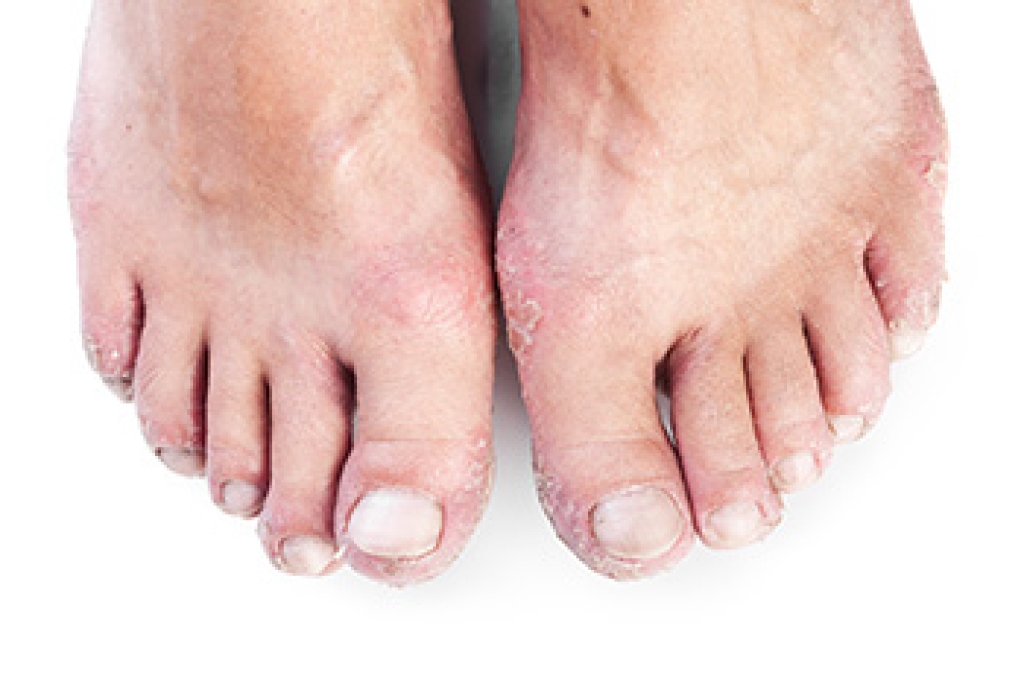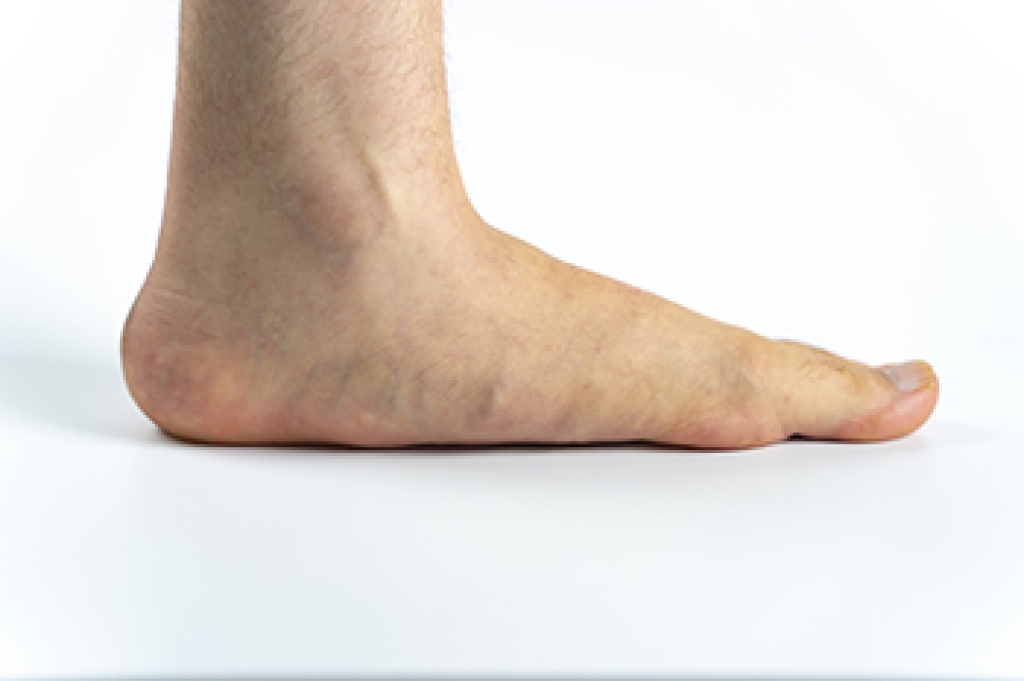What Is a Lateral Ankle Sprain?

A lateral ankle sprain is considered the most common type of ankle injury. This can happen when the ankle rolls inward and can affect the anterior talofibular and calcaneofibular ligaments. These ligaments are on the outside of the body and may become injured when the ankle moves past its normal range of motion. The common symptoms many people experience with an ankle sprain often include severe pain, swelling, and difficulty moving the ankle. It is beneficial to have a proper diagnosis performed, which consists of having an X-ray taken. This is successful in ruling out a fractured ankle, and treatment can begin for the sprained ankle. The affected ankle can be wrapped in an elastic bandage, and existing swelling may be reduced when the foot is elevated. If you have sprained your ankle, it is suggested that you confer with a podiatrist who can provide you with treatment options that are right for you.
Ankle sprains are common but need immediate attention. If you need your feet checked, contact one of our podiatrists from Westside Podiatry Center, LLP. Our doctors can provide the care you need to keep you pain-free and on your feet.
How Does an Ankle Sprain Occur?
Ankle sprains take place when the ligaments in your ankle are torn or stretched beyond their limits. There are multiple ways that the ankle can become injured, including twisting or rolling over onto your ankle, putting undue stress on it, or causing trauma to the ankle itself.
What Are the Symptoms?
- Mild to moderate bruising
- Limited mobility
- Swelling
- Discoloration of the skin (depending on severity)
Preventing a Sprain
- Wearing appropriate shoes for the occasion
- Stretching before exercises and sports
- Knowing your limits
Treatment of a Sprain
Treatment of a sprain depends on the severity. Many times, people are told to rest and remain off their feet completely, while others are given an air cast. If the sprain is very severe, surgery may be required.
If you have suffered an ankle sprain previously, you may want to consider additional support such as a brace and regular exercises to strengthen the ankle.
If you have any questions please feel free to contact one of our offices located in Liverpool, Camillus, Skaneateles, Oswego, and Cicero, NY . We offer the newest diagnostic tools and technology to treat your foot and ankle needs.
The Heels and Mobility

Various foot conditions can make movement difficult. Chief among them is cracked heels. As one ages, skin becomes thinner and dryer and the skin on the heels can form calluses, or dead skin, and can develop cracks. This often happens because the heels endure a lot of pressure from walking and the skin is dry. Cracked heels can become painful and make walking difficult. If they get bad enough, fissures can develop and the cracks deepen, can bleed, and be a breeding ground for infection. If one has diabetes, peripheral artery disease, or poor circulation, cracked heels can become serious foot wounds that are difficult to heal. Hydration and moisturizing the feet can help with cracked heels, as can wearing socks with cushioned shoes and temporarily cutting down on activities that put pressure on the heels. If you have cracked heels and the condition is causing you discomfort or it is worsening, it is strongly suggested that you make an appointment with a podiatrist who can make sure that is what you are dealing with and provide treatment.
If the skin on your feet starts to crack, you may want to see a podiatrist to find treatment. If you have any concerns, contact one of our podiatrists from Westside Podiatry Center, LLP. Our doctors can provide the care you need to keep you pain-free and on your feet.
Cracked Heels
It is important to moisturize your cracked heels in order to prevent pain, bleeding, and infection. The reason cracked heels form is because the skin on the foot is too dry to support the immense pressure placed on them. When the foot expands, the dry skin on the foot begins to split.
Ways to Help Heal Them
- Invest in a good foot cream
- Try Using Petroleum Jelly
- Ease up on Soaps
- Drink Plenty of Water
Ways to Prevent Cracked Heels
- Moisturize After Showering
- Skip a Shower
- Keep Shower Water Lukewarm
- Don’t Scrub Your Feet
If you are unsure how to proceed in treating cracked heels, seek guidance from a podiatrist. Your doctor will help you with any questions or information you may need.
If you have any questions, please feel free to contact one of our offices located in Liverpool, Camillus, Skaneateles, Oswego, and Cicero, NY . We offer the newest diagnostic and treatment technologies for all your foot care needs.
How Psoriasis Can Affect the Feet

Psoriasis is an auto-immune skin condition that can affect many parts of the body, including the feet. When it causes a thickening of the skin covered in scales, it is referred to as plaque psoriasis. Symptoms of plaque psoriasis are itchy, dry, and cracked skin. Toenails may become pitted, cracked, or crumbly, and the affected skin may be painful. Scratching the skin leaves it open to infection. Psoriasis of the feet is referred to as pustular and may be the result of banging or rubbing of the area. This produces an itching sensation that can become quite uncomfortable. While there is no known cure for psoriasis, many treatment options are available, including steroid creams, medicated ointments, and moisturizers. For more information about dealing with psoriasis of the feet, it is suggested that you make an appointment with a podiatrist.
Everyday foot care is very important to prevent infection and other foot ailments. If you need your feet checked, contact one of our podiatrists from Westside Podiatry Center, LLP. Our doctors can provide the care you need to keep you pain-free and on your feet.
Everyday Foot Care
Often, people take care of their bodies, face and hair more so than they do for their feet. But the feet are a very important aspect of our bodies, and one that we should pay more attention to. Without our feet, we would not be able to perform most daily tasks.
It is best to check your feet regularly to make sure there are no new bruises or cuts that you may not have noticed before. For dry feet, moisturizer can easily be a remedy and can be applied as often as necessary to the affected areas. Wearing shoes that fit well can also help you maintain good foot health, as well as making it easier to walk and do daily activities without the stress or pain of ill-fitting shoes, high heels, or even flip flops. Wearing clean socks with closed shoes is important to ensure that sweat and bacteria do not accumulate within the shoe. Clean socks help to prevent Athlete’s foot, fungi problems, bad odors, and can absorb sweat.
If you have any questions, please feel free to contact one of our offices located in Liverpool, Camillus, Skaneateles, Oswego, and Cicero, NY . We offer the newest diagnostic and treatment technologies for all your foot care needs.
Shoes for Athletes With Flat Feet

If you have flat feet and also engage in physical activities that involve walking or running, finding the right shoes can be challenging. Flat feet is a condition where the arch has collapsed and the sole of the foot lies flat on the ground while standing. A normal foot arch allows the weight to be evenly transferred from the toes to the heels with each step. Patients who have flat feet are unable to do this, which can present problems in the feet, hips, and back, especially in active people. A number of shoes that have arch support may help to eliminate the symptoms of having flat feet, but these one-size-fits-all inserts may not be enough. Custom orthotics are another option that many patients consider. A podiatrist can examine the feet and create an insole that can best counter the effects of flat feet, and can fit well into any shoes that are purchased. An impression of the feet will be taken, and an orthotic device can be constructed which can give provide adequate arch support. If you enjoy running and have flat feet, it is suggested that you consult a podiatrist, who can help you with relief options.
Flatfoot is a condition many people suffer from. If you have flat feet, contact one of our podiatrists from Westside Podiatry Center, LLP. Our doctors will treat your foot and ankle needs.
What Are Flat Feet?
Flatfoot is a condition in which the arch of the foot is depressed and the sole of the foot is almost completely in contact with the ground. About 20-30% of the population generally has flat feet because their arches never formed during growth.
Conditions & Problems:
Having flat feet makes it difficult to run or walk because of the stress placed on the ankles.
Alignment – The general alignment of your legs can be disrupted, because the ankles move inward which can cause major discomfort.
Knees – If you have complications with your knees, flat feet can be a contributor to arthritis in that area.
Symptoms
- Pain around the heel or arch area
- Trouble standing on the tip toe
- Swelling around the inside of the ankle
- Flat look to one or both feet
- Having your shoes feel uneven when worn
Treatment
If you are experiencing pain and stress on the foot you may weaken the posterior tibial tendon, which runs around the inside of the ankle.
If you have any questions, please feel free to contact one of our offices located in Liverpool, Camillus, Skaneateles, Oswego, and Cicero, NY . We offer the newest diagnostic and treatment technologies for all your foot care needs.

